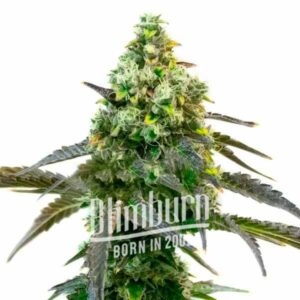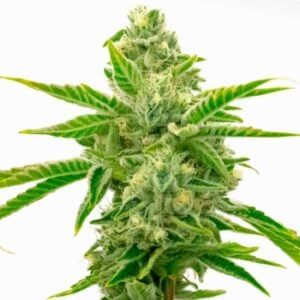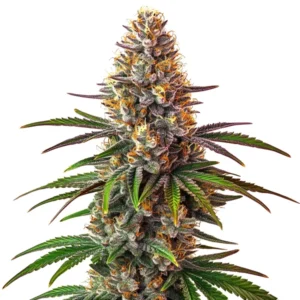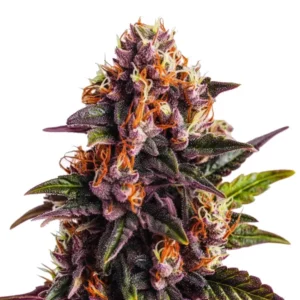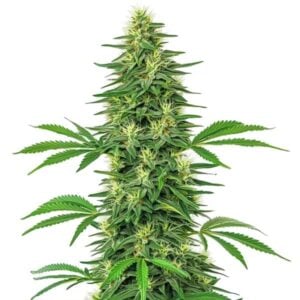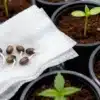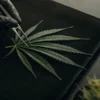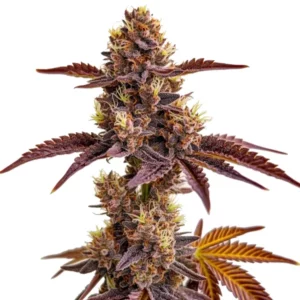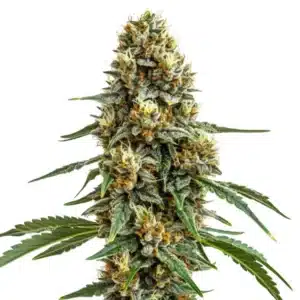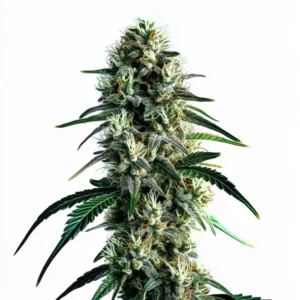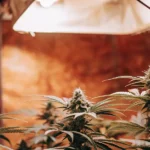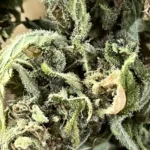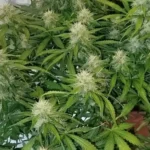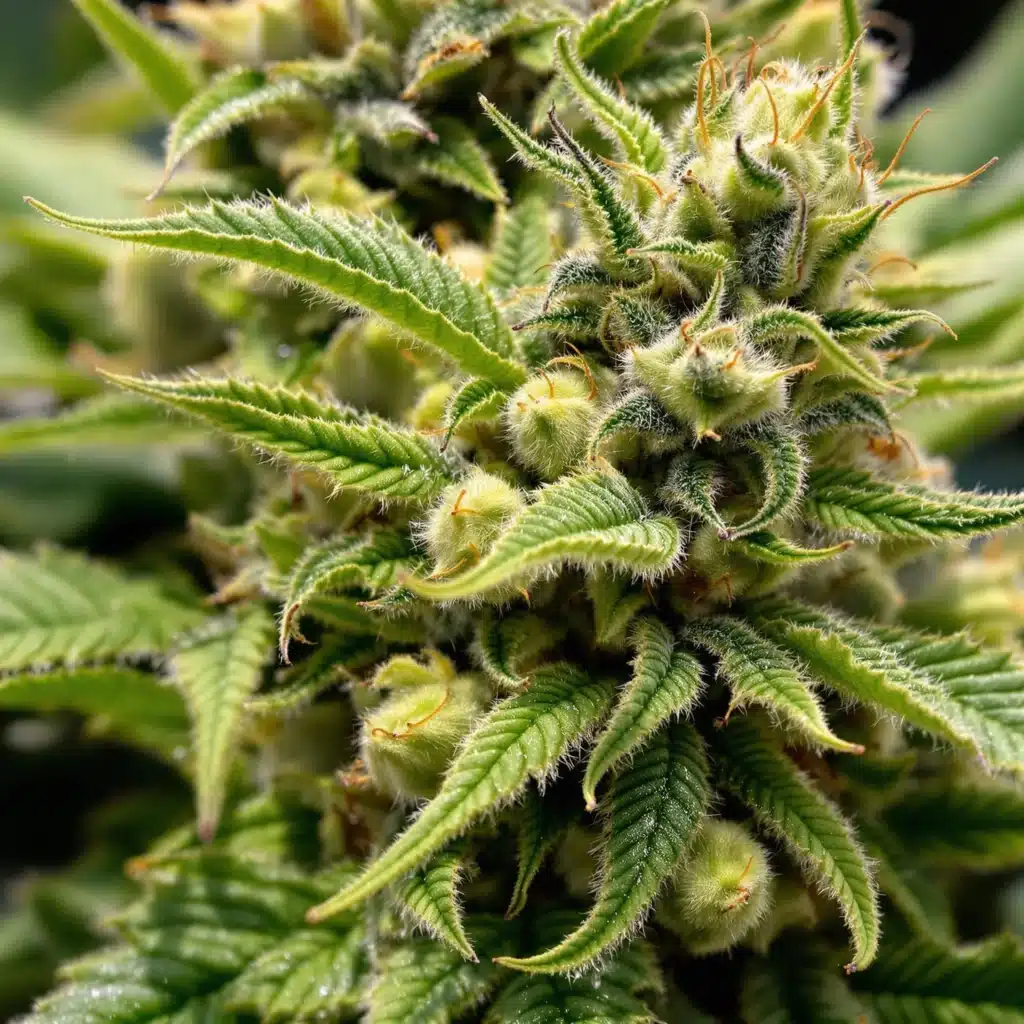
The Plant’s Last Stand: A Grower’s Guide to Hermaphrodites
Let’s talk about one of the most heartbreaking and frustrating sights a grower can see deep in their flowering room: you’re inspecting your beautiful female buds, and you spot it. A strange, yellow, banana-shaped growth sticking out. Or worse, a small cluster of male pollen sacs.
Your plant has become a “hermaphrodite,” or “hermie.”
Recommended Strains
Godfather OG
|
|
THC | 26% - 30% (High) |
|
|
Type | Feminized |
|
|
Yield | High |
|
|
Phenotype | 60% Indica / 40% Sativa |
Godfather OG Auto
|
|
THC | 25% - 26% (High) |
|
|
Type | Autoflowering |
|
|
Yield | Low |
|
|
Phenotype | 70% Indica / 30% Sativa |
But before you get angry and blame the plant, you need to understand something very important. Your plant isn’t making a mistake. It’s being intelligent. Becoming a hermaphrodite is your plant’s last-ditch, desperate survival plan.
The “Why”: A Story of Survival
Imagine your female plant. Her one biological purpose in life is to create seeds to perpetuate the species. She’s been flowering for weeks, putting out her beautiful white pistils, waiting for pollen that never arrives.
Now, add a major stressor to her life—a light leak during her dark period, a brutal heatwave, a major nutrient problem. She panics. Her internal wiring tells her, “I’m in danger! I’m going to die here, alone, without making any seeds!”
So, in a final, desperate act to save her lineage, she does the only thing she can: she tries to create her own pollen. She will force out male reproductive parts in a last-ditch attempt to pollinate herself and ensure the survival of her genetics. It is a beautiful, tragic, and intelligent act of survival that will, unfortunately, ruin your harvest of seedless flower.
Promos & Deals
The Main Culprits: Stress and Risky Genetics
The main trigger for this is always stress, especially light leaks during the 12/12 flowering cycle. But genetics also play a huge role.
- Some genetics are just more prone to it. Be aware that long-flowering Sativa varieties, simply because they spend more time in the vulnerable flowering stage, can be more susceptible to the kind of late-stage stress that can cause them to hermie.
- Poorly made feminized seeds can also carry a higher risk.
The Spotter’s Guide: Bananas and Balls
You need to become a hawk in your flowering room, inspecting your buds closely every single day. You’re looking for two telltale signs:
- “Nanners”: This is the most common sign. You’ll see one or more bright yellow, banana-shaped growths sticking right out from the middle of a female bud. This is an exposed male stamen.
- Pollen Sacs: The other sign is the growth of full, round, ball-like pollen sacs at the nodes, mixed in among your female flowers.
The Emergency Response: Surgery, Not Execution
If you catch just a few of these early on, you don’t necessarily have to destroy the plant. You can perform emergency surgery. Get a pair of clean tweezers and a spray bottle filled with plain water. First, gently mist the nanner or pollen sac with water. This is a brilliant trick that neutralizes the pollen and prevents it from going airborne. Then, carefully pluck the male part off with the tweezers.
Be diligent. Check the plant every day for new growths. But make no mistake: even though this hermaphrodite pollen is less viable than pollen from a true male plant, it absolutely WILL pollinate your nearby flowers and fill them with seeds. You must be ruthless in removing it.
When you understand why your plant is doing what it’s doing, you can learn to Nurture it better, creating a low-stress Homegrown environment where your plants can Thrive without ever having to hit the panic button.
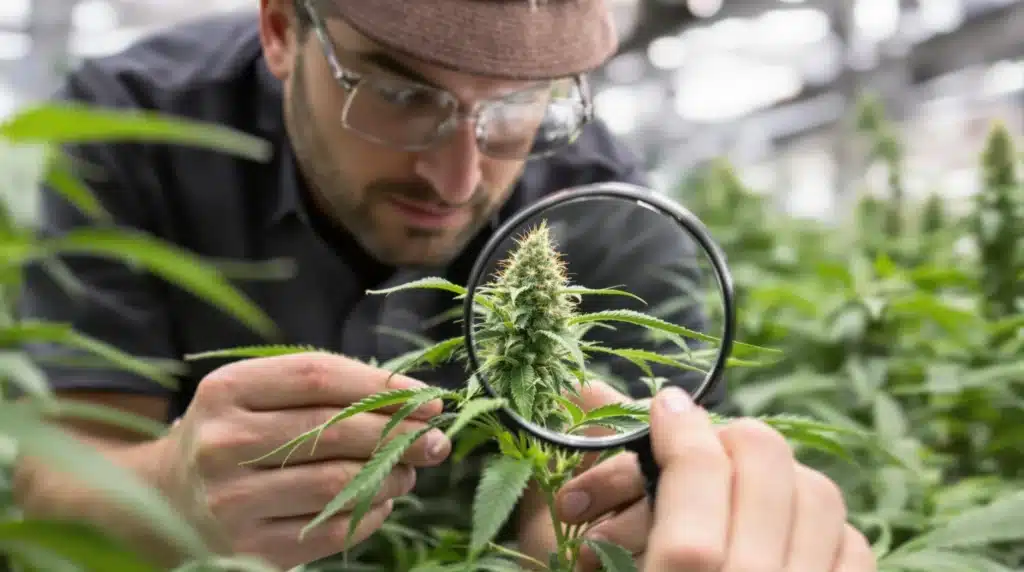
Frequently Asked Questions
What is a “hermie” cannabis plant?
A “hermie” is a slang term for a hermaphrodite cannabis plant. It’s a female plant that, due to stress or genetic predisposition, begins to grow male reproductive parts (pollen sacs or “nanners”) in addition to its female flowers.
Why do cannabis plants become hermaphrodites?
It’s a survival instinct. When a female plant is under severe stress and feels it might die without being pollinated, it will make a last-ditch effort to reproduce by creating its own pollen to pollinate itself. This ensures its genetic line continues, but it will fill your buds with seeds.
Are Sativa strains more likely to become hermaphrodites?
They can be. Because many Sativa strains have a much longer flowering period than Indicas, there is simply more time for them to be exposed to a potential stressor that could trigger a hermaphroditic response. It requires extra vigilance from the grower.
Can I save a plant that has started to show hermaphrodite traits?
Yes, if you catch it very early and the problem is minor (only a few pollen sacs or “nanners”). You can carefully mist the male parts with water to neutralize the pollen and then pluck them off with a pair of tweezers. You must then inspect the plant daily for any new male growths.



